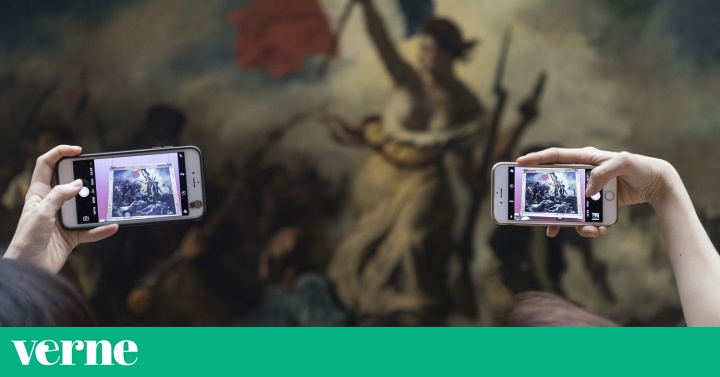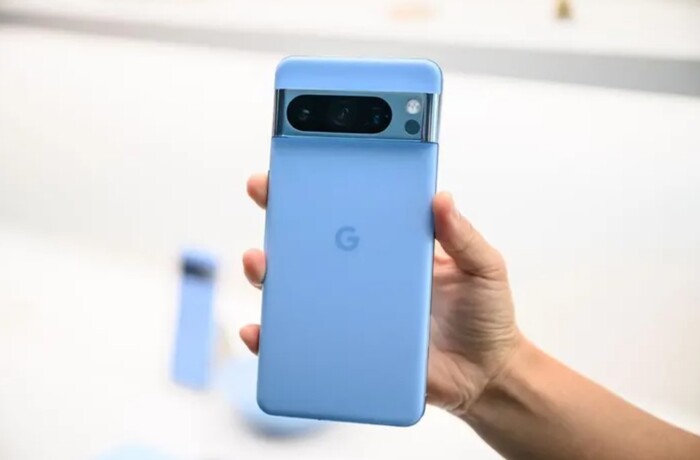One photograph features dozens of people crowding Leonardo Da Vinci's La Gioconda room at the Louvre Museum in Paris. Without respecting the safety distance and without a mask, visitors fight to find a place among the crowd of people, raising their mobile phones and other electronic devices to photograph the work of the famous Renaissance painter and other paintings that are exhibited in the same space. This overwhelming scene seems impossible to us right now. But let the health authorities not worry, because the image is not current. It was taken in the "old normal" by the photographer Antonio Pérez Río (Madrid, 1972) and is part of the Masterworks photobook (Lens Books), a project set in the Parisian museum that reflects on mass tourism and how the use of technology transforms our experience with art.
The Louvre Museum, the most visited in the world, reopened last Monday after four months closed by the covid-19 pandemic. But with the new protocols, among which is the unique direction of the march and the reduction of the positive spaces to 70%, it will be difficult to see images like Pérez's again, who during the confinement repeatedly thought about this issue.
Between 2014 and 2018, the photographer visited the museum 37 times, documenting what he lived there with his camera and a notebook. “Crippling scenes like the one in the La Gioconda room where you could barely move. And others also unpleasant, such as that of a man who confronted a room assistant who warned him not to touch a sculpture, ”Pérez tells Verne in a telephone conversation.
Pérez regrets that the Louvre had become a theme park, "like Disneyland (also in Paris), where its content does not matter so much, but the act of consuming frantically, in this case also with compulsive photography." It was precisely the impact of this type of relationship with art that led the photographer to start this project, which - as he himself considers - has acquired another reading after the pandemic. “These types of images now seem from another life. And it is possible that in this new situation, in which it is not known whether or not mass tourism will return, a way of relating to art can be recovered, especially in museums as large and important as the Louvre, more leisurely and contemplative ” .
The Louvre Museum is one of the world's great museums where the public is allowed to take pictures. Others, like the Prado Museum, prohibit it. In Masterpieces , the photographer looks at those who observe the works of art through their mobile phones and other devices. "People who stand in front of works created to be physically contemplated and who, even having them in front, do so through a screen, where all colors are saturated, where everything is shiny and polished, and everything is the same size, as is the one on the screen of your device. A different contemplative experience that ends up homogenizing all the works ”, explains the author of the photobook.
Thus, the 65 photographs that compose it show large paintings and sculptures of history through the screens of visitors to the Parisian museum, relegating the physical work to a mere blur in the background of the image. For example, La Libertad guiando al pueblo , by Eugène Delacroix; The Countess of the Carpio , by Francisco de Goya; The raft of the Medusa , by Théodore Géricault or the own Mona Lisa , by Da Vinci seen on a mobile phone with a Minnie Mouse case. It is precisely these details of the mobiles, the languages shown in them or the variety of hands that hold them (some younger and others older) that show the universality of this trend. "Of course, not everyone relates to art in this way, but this experience that I talk about in my project is a majority one," says Pérez.
These electronic devices have been precisely our only channel of connection with art during confinement. In these months when museums and other cultural centers closed, many of them enabled virtual exhibitions. “In this case, we have turned to screens because we couldn't physically go, the technology has been very useful. Everything that has been generated this time has helped a lot to publicize works, an informative work that helps us to understand them better when we put ourselves physically in front of them ”, says Pérez, who is also founder and director of the LENS School of Visual Arts , in Madrid. "But we cannot forget that virtual and physical are two different experiences and that we should never give up seeing them with our own eyes in the museum because if not, we miss many nuances."
The photographer believes that the face-to-face experience of museums, although transformed, will not disappear, and that what was experienced during confinement can make us value more the physical interaction with art. "After three months looking at screens we may now feel like forgetting a little about them, going to a museum and looking at the works without using our phones," he adds.
Masterpieces ended up becoming a guide to that other experience that could be lived in the Louvre, that of massification and compulsive taking of photographs. So much so that even the museum itself agreed to sell it in its store. After four years visiting it, the Parisian museum has become the photographer's second home, to which he intends to return when he can. "I will not lie, I am very curious to know what it will be like to visit the Louvre in this new normal", he concludes.
* You can also follow us on Instagram and Flipboard. Don't miss the best of Verne!





/cloudfront-eu-central-1.images.arcpublishing.com/prisa/SLZVRFFDHZA5LH6U26AMIRYYCE.png)


/cloudfront-eu-central-1.images.arcpublishing.com/prisa/F3T7G2MNZFFJ7HVGRKZCTCOXEE.jpg)
